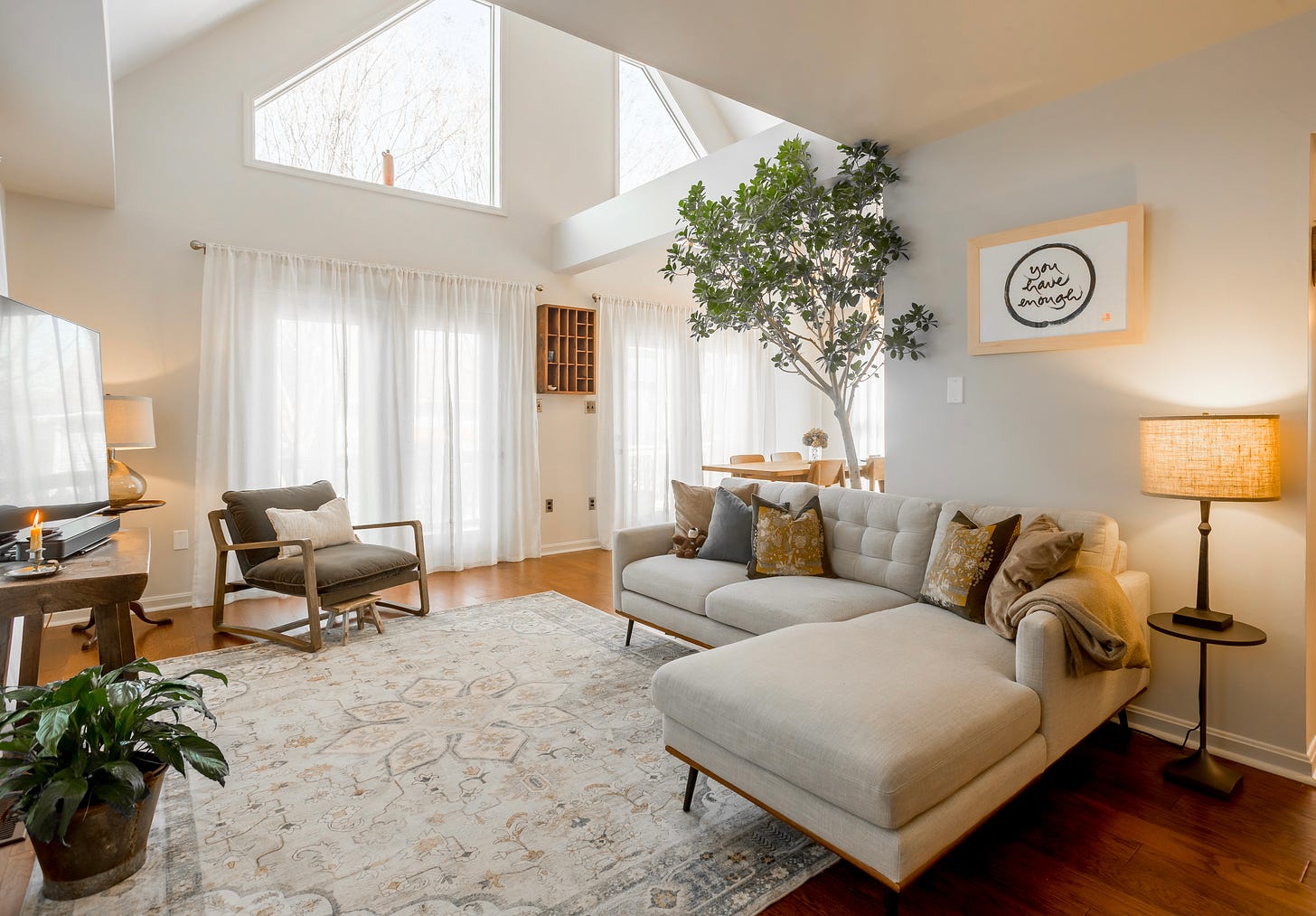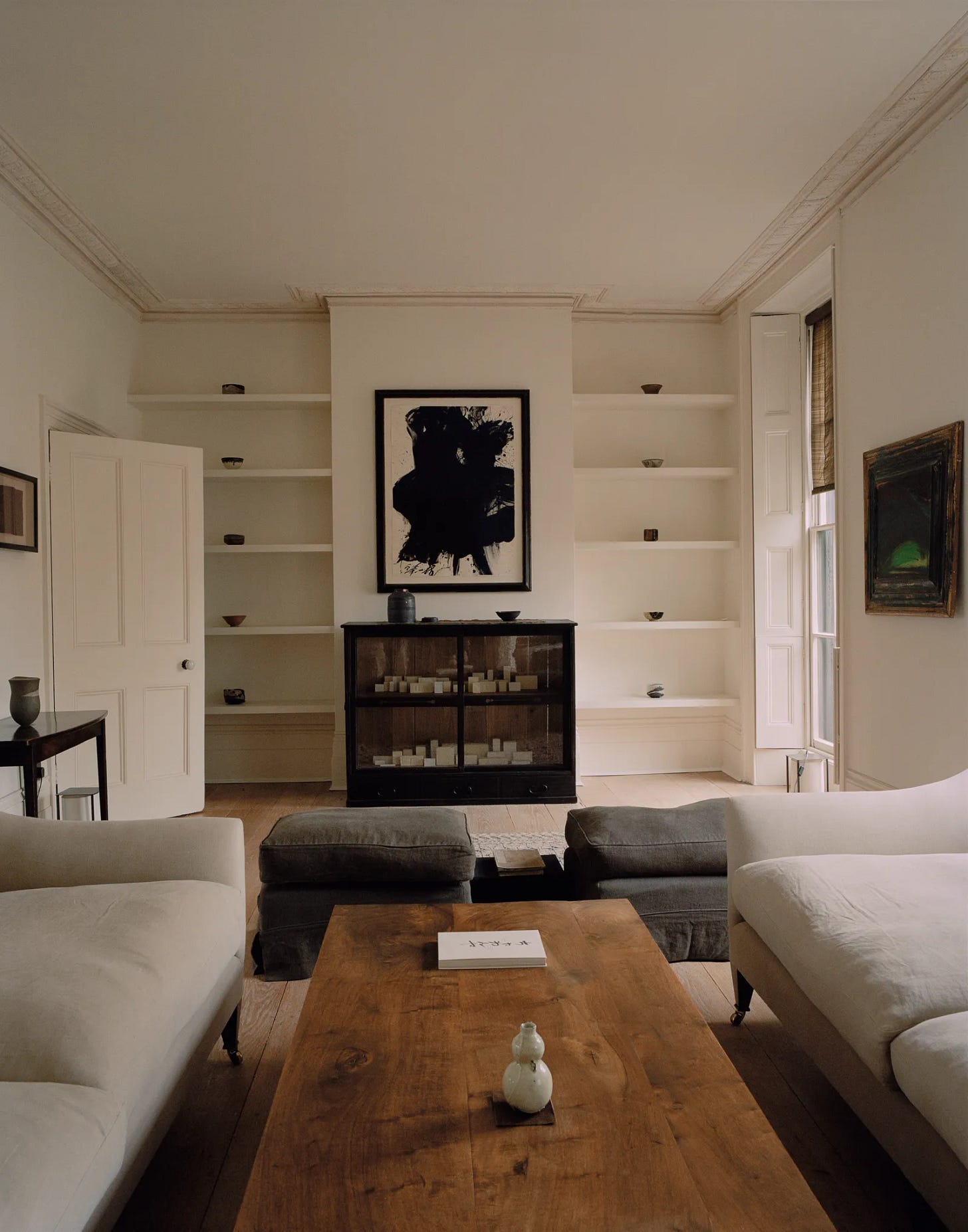
I’ve been developing something I call the Slow + Simple approach. It came from a yearning to live a simpler, slower life and the first time I was aware of how powerful the approach could be was when I decluttered my house.
I’ve been interested in Japanese minimalism and the simple elegance of Dutch design for some time now. I admired it from afar in choices made by people like
and , particularly enjoying how the non-cluttered look was calming, easy on the eye and allowed conscious and very specific design choices to stand out like a statue, painting, or choice of fabric.I first started engaging with it in my own home entirely accidentally when my business took a turn for the worse and I was forced to sell possessions to pay bills (if you’ve not read that gory story, you can catch up on the horrific details of all that here). That, somewhat coincidentally, came at a time I was deepening my Buddhist practice and exploring non-attachment - essentially the practice of being able to let go of things. A collection I began when I was 15 of some 3,000 books got slowly whittled down to just over 100 and only stopped because they needed to be packed up to be shipped back to England. A task I once would have thought impossible was both liberating and informative: there were books there I’d not read, which I bought 15 years ago and when I read some of them, I ended up giving them away because I didn’t like them.
First I looked at every single item in my house. Every item in every drawer, every book, every decorative item, every item of clothing. It takes time because it’s mentally taxing, but so liberating to gradually thin out the house. My personal criteria was “do I love this?” and, if not, “is it essential as something useful?”. Bags and bags and bags of items went to the charity shop and over a few weeks I did several passes of the house, going back over my original choices of things to stay, resulting in more bags to the charity shop.
The result could not be further from my previous design choices, which I suspect would be labelled as “maximalist”. But the lure of the simple, slower, stripped back design is more than simply aesthetic.
Admittedly I prefer the dramatic end of the Japanese simplistic and Dutch designs: the less in a room the better. Some of my American friends would visit and ask: “When is the rest of your stuff arriving?”.

What I realise now is that I bought things to make me happy. I bought things in place of having hard conversations with my partners. I bought things when I was sad. I bought things to feel as though I fit in, and even so by virtue of having the item, I felt like I was part of a group of people: namely the successful ones. I bought watches, pencils (I wrote about the world’s most expensive pencil and my obsession with £150+ pencils here), gadgets, books and other nonsense. I bought books and never even read them but by virtue of physically having them felt like I had at least achieved a status of knowledge. It was all utter nonsense and I share this with you from a place of authenticity and vulnerability because I cannot be the only person doing this sort of accumulating.
We aren’t, however, conscious of it at the time. I think we know deep down, but that voice is suppressed and silenced. It takes someone to point it out to us, or in my case a physical, visual realisation as I began to free myself of objects. In turn I realised how little I actually needed - but how much I wanted.
The things we own say a lot about us. And the more we own, the more it says about us and our need to find comfort in things over personal reflection; our inability to let go, holding onto physical objects for comfort and safety over having difficult conversations with others and ourselves; and our need for validation, and support externally over learning to love ourselves.
Through the Keyhole was a popular TV show in England when I was younger where people would have to guess (and you have to say this in Lloyd Grossman’s iconic strange drawling voice) “who lives in a house like this?” based on a camera snooping around a celebrity’s bedroom, bookshelves and kitchen. The modern day equivalent of that comes from websites like The World of Interiors and helped confirm that I wasn’t alone with my dramatic living choices.
I absolutely understand that this style won’t be for everyone and I’m not suggesting this is the goal, or aim, or the way to achieve a slower and simpler life.
What I know to be true, however, is the power of letting go. The less we have, the closer we can be to the truest and best version of ourselves. The less we have, the less we have to worry about. The less we have the easier it is for our brain to genuinely relax, and calm.
And the ultimate? The less we have, the easier it is to clean!
Sell items of value and enjoy the extra savings. Gift those things you can’t sell to help others. I found a charity store that helps ex-veterans settle into their own homes. And enjoy the freedom it offers your brain and self when you realise you don’t need so much stuff and begin to appreciate so much more the few things you do own. More on that another time and I’ll also offer some design ideas on how to get “the look” if you do like this Japanese/Dutch simplistic styling.



